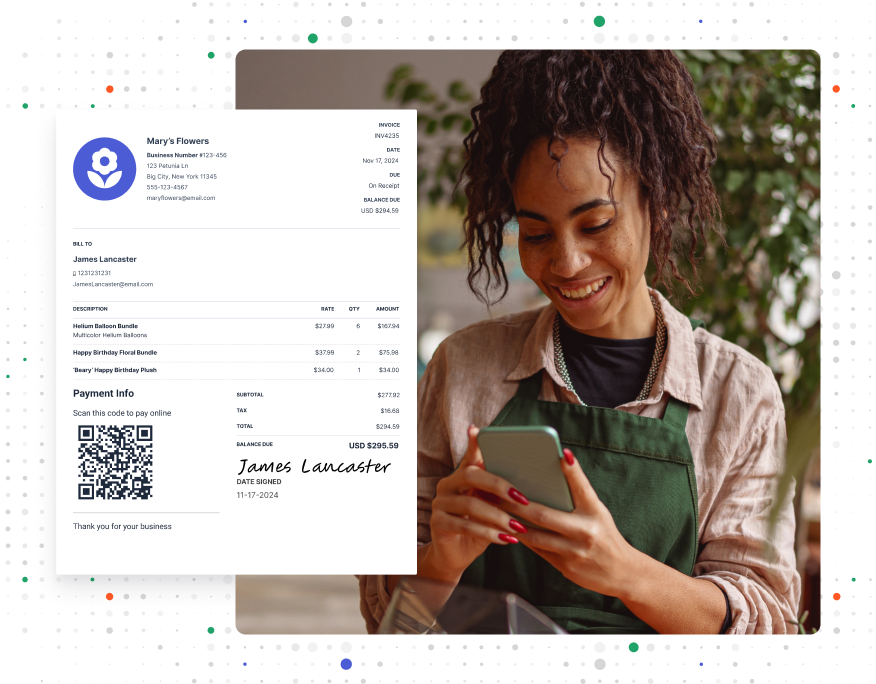Invoice Factoring: 15 Mistakes You Should Avoid

Are late payments from customers creating cash flow problems for your small business?
This common issue can limit your ability to manage everyday expenses. Luckily, there’s a way to get the money you’re owed fast through invoice factoring.
Business invoice factoring takes a financial obstacle and turns it into a stepping stone for growth. Here’s how.
What is Invoice Factoring?
Invoice factoring is when small businesses sell their unpaid invoices to an invoice factoring company for quick cash. The company then pays the business a part of the invoice value upfront, usually 70% to 96%, and they get the rest after the client pays the invoice (minus a fee).
This arrangement helps businesses maintain a steady cash flow for their daily business needs. You might also hear Invoice factoring called accounts receivable factoring or debt factoring.
How Does Invoice Factoring Work?

Here’s a simple breakdown of how business invoice factoring works:
- First, nothing changes with the way you run your small business. You still provide products or services to your customers like you usually do.
- After you deliver the products or services, you send invoices to your customers for the money they owe. These invoices are known as accounts receivable and are considered an asset because they represent future cash.
- Then, you sell these unpaid invoices to a factoring company. This company buys your invoices and gives you a cash advance.
- Instead of you collecting payments from your customers, the factoring company does this job. Your customers will then pay the factoring company.
- After the factoring company collects the payments from your customers, it will send you the rest of the money minus its service fees.
Before you start, you’ll agree to specific terms with the factoring company, including fees and how much cash you’ll receive upfront. Read and understand these terms in the factoring agreement to avoid surprises.
RELATED ARTICLE — What is Invoice Factoring?
15 Invoice Factoring Mistakes Every Business Should Avoid
Cash flow problems top the list of challenges faced by business owners. Customers who are late on payments, or don’t pay them at all, eat away at your bottom line.
Business invoice factoring can combat this problem and simplify the management of your business funding. And knowing these common mistakes businesses face when using invoice factoring can help you avoid them.
Mistake # 1: Invoice Factoring Before Services are Delivered
Only ask for cash advances from invoice factoring companies after you have delivered the services. Factoring companies check each invoice to see that the services are completed. If they aren’t, you won’t receive any advance payment.
Mistake # 2: Not Understanding Your Payment Terms
Make sure you understand every part of your contract with the factoring company. If you skip details, you might face hidden costs or problems later. Ask for all the invoice factoring information from your lender, and take the time to read the fine print. Understand all terms related to fees, payment schedules, and contract durations. You should know exactly what you’re agreeing to.
RELATED ARTICLE — What is a Commercial Invoice?
Mistake # 3: Using Factoring for Long-Term Projects
Factoring is useful for quick cash needs or invoices you know won’t be paid on time. But it’s not great for long-term projects. Long-term financing usually has lower interest rates than small business factoring. You’re better off exploring options like a business loan or line of credit, which generally offer favorable terms.
Mistake # 4: Late Set-Up of Accounting Processes
Set up your accounting practices as soon as you start your business. Effective accounting helps you manage invoices and cash flow. It also makes working with a factoring company easier because your financial records are in order. Delaying this set-up can lead to confusion and financial issues later.
RELATED ARTICLE — Accrual Basis Accounting: Definition and How It Works
Mistake # 5: Not Giving the Needed Documents
Provide all required documents to your factoring company right away. These documents prove that your invoices are valid and services are complete. Missing documents delay the small business factoring process, which delays your access to cash.
Mistake # 6: Sending Payments to the Wrong Place
Always ensure that customer payments are sent to the correct address or account. Mistakes can result in lost funds or privacy issues. In large companies, the wrong department could even receive your invoice—so double-check contact details.
Mistake # 7: Being Fooled by Hidden Fees
Read all the fine print in your factoring agreement to understand the discount factoring rate, which is the fee you pay for the service. Be aware of other potential hidden costs, including charges for credit checks, monthly service, or early repayment. Make sure you understand all payment terms and that you’re getting the best value.
Mistake # 8: Not Keeping Customers Informed
Talk to your customers about using an invoice factoring company. Tell them why you chose to work with one, what it means for them, and the company’s name. Let them know before the factoring company contacts them. Being open like this helps avoid confusion and keeps your relationships strong, even in the event of missed payments.
RELATED ARTICLE — How to Write an Invoice for Freelance Work
Mistake # 9: Not Asking About Cash Advances
As a business owner, you need to know how much cash you’ll get upfront from the factoring company. Check if this is enough for your immediate needs. If it’s not, you could run out of money for your daily business operations.
Mistake # 10: Sending Invoices Late
Send out invoices as soon as your product is delivered or your service is complete. Taking too long to do this task can disrupt your cash flow. Clients often have their own payment cycles, and if your invoice arrives late, it may miss the current cycle, delaying your payment.
RELATED ARTICLE — How to Send an Invoice
Mistake # 11: Overlooking the Need for a Backup Plan
Relying only on invoice factoring can be risky for a business. This is especially true if the factoring company changes its payment terms or if there are issues with invoice approvals. Have a backup plan (like a business loan or line of credit) for cash flow management if factoring no longer meets your needs.
Mistake # 12: Ignoring the Impact on Customer Relationships
Some businesses don’t think about how factoring may affect their customer relationships. Be honest about using a financing company, as customers might be concerned or confused when contacted by a third party for payment.
Mistake # 13: Failing to Plan for the End of the Factoring Agreement
Know what happens when the factoring agreement ends. Are there any closing costs? What happens to unpaid invoices? Having all the answers to these questions can help you have an exit strategy that prevents you from going into debt.
Mistake # 14: Not Using an Invoice System
Failing to use an invoicing system can lead to disorganized financial records and delayed payments. A trust-worthy invoice system, like Invoice Simple, helps you manage invoices so they’re sent on time and tracked accurately. This process is helpful when working with a factoring company to avoid complications in payment processing.
Streamline your invoicing process with Invoice Simple. Try it today to keep your cash flow smooth and reliable.
Invoice Factoring: Do’s And Don’ts

Invoice factoring allows you to get most of your working capital now, instead of waiting for customers to pay their invoices. But there’s a lot to consider before deciding if it’s right for your business. Here’s what to do and not to do when considering small business factoring.
Do:
- Replenish supplies. Use the quick cash from invoice factoring to keep your inventory stocked so you never run out of what you need to keep your business running.
- Pay your employees. The immediate funds from factoring can help you make payroll on time. This, in turn, keeps your team happy and maintains a reliable workforce.
- Repair equipment. If equipment needs fixing, you can use the funds from factoring to cover these costs, preventing downtime in your operations.
- Grow your company. Factoring can provide the business capital you need to invest in expanding your business. Use it to enter new markets or increase your marketing efforts.
Don’t:
- Don’t use factoring if you don’t have many customers. Sending bills only to a few customers is riskier for the factoring company.
- Don’t ignore how it affects your customer relationships. The company you choose will be collecting payment from your customers. If they are too harsh, it could make customers unhappy.
- Don’t overlook possible extra costs. If a customer doesn’t pay, you might have to pay the money yourself—especially if you didn’t choose non-recourse factoring. (This is when the factoring company covers the loss if the invoice isn’t paid.) High-risk customers, such as those with low credit scores, might also lead to higher fees.
- Don’t lose control over billing. Since the factoring company handles collecting the invoices, you don’t control this part of your business. Make sure the factoring company treats customers fairly to keep good relationships.
Using invoice factoring wisely can really help your small business manage its money better. Just make sure you understand both the good parts and the challenges before you decide.
Online Invoice Payment Processing Software | Web & Mobile
Looking to improve your invoice process without an invoice factoring company? Meet Invoice Simple, the easiest way to keep your invoices organized—for you and your customers. Let your clients pay with credit, debit, or flexible online payment options.
Plus, you can track outstanding invoices, their due dates, and their balance due at a glance, on desktop or mobile.
Start Your First
Invoice Today
Create customized and professional
invoices and connect with clients
